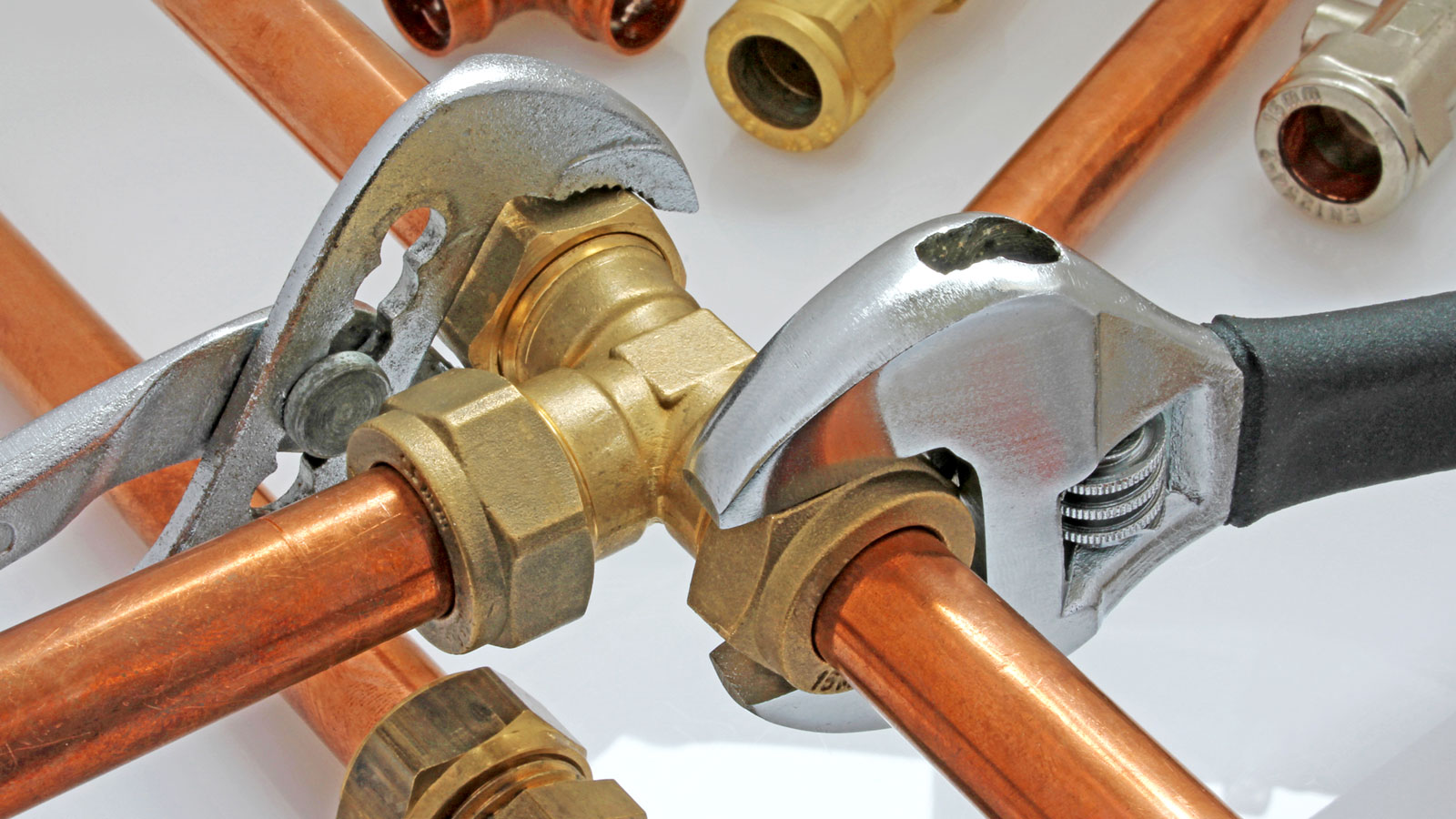How to maintain a heat pump properly
Knowing how to maintain a heat pump is essential for achieving best performance. We asked the experts what's involved
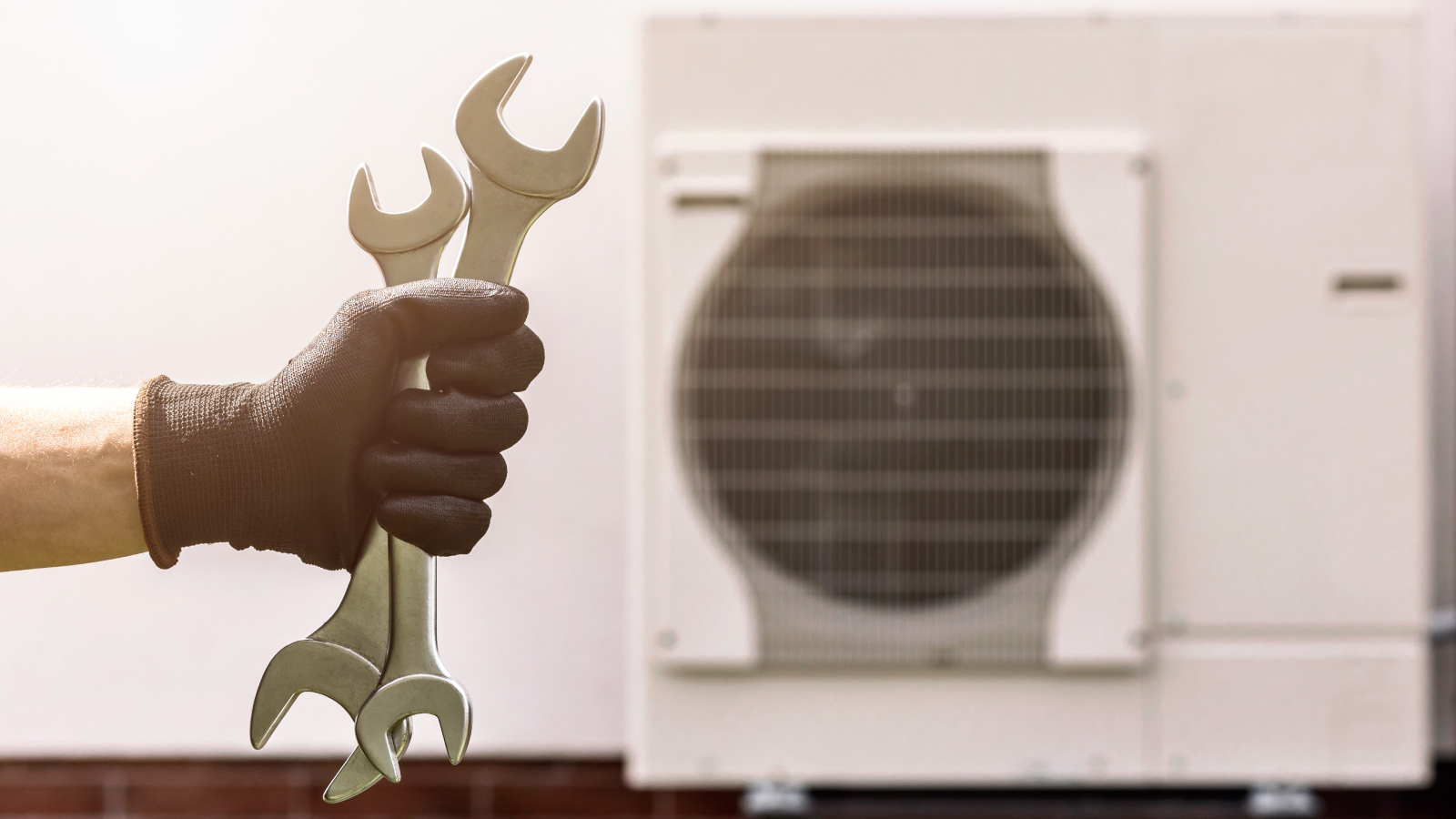
If you've done your research on how to choose heat pumps the level of financial investment involved means you'll want to keep it in tip top condition for as long as you can. And while we all know the requirements for servicing gas boiler led systems, you may not know how to maintain a heat pump, or if there's any difference in the maintenance plans for different types.
With air source heat pumps and ground source heat pumps the two most common types available, we asked the experts how to maintain each type properly so you can be comfortable in the knowledge your system not only performs well, but has a good lifespan.
With the main air source heat pump unit located outside the house, it's natural to wonder if this puts the unit at more risk and therefore in need of more maintenance. Likewise, if the technology of both is still new to you, it's easy to assume it will be complicated.
How to maintain a heat pump isn't as complex as you'd think
Despite the difference in types and models, and some of the heat pump myths that you might hear, heat pumps are all considered low-maintenance heating options. And, as with traditional gas boiler led systems, can generally be left to run in the background as long as they have a professional annual service.
That said, there are some regular checks and quick jobs you can do yourself that will help to prevent problems and keep them running well. A heat pump that's not being maintained well could draw upon 25% more energy to power it making it less of an energy efficient solution.
Maintaining an air source heat pump
Air source heat pumps are the most common type of heat pump and there are a number of different models within the group. Some vary according to temperature, while others such as hybrid heat pumps work with your existing boiler to provide heat.
"Your heat pump maintenance needs will depend on the make and model of your system," says Tamara Birch, senior writer for The Eco Experts, "so that's the best place to start when trying to find out what your system may need.
Bring your dream home to life with expert advice, how to guides and design inspiration. Sign up for our newsletter and get two free tickets to a Homebuilding & Renovating Show near you.
However, the general consensus is that, "an air source heat pump doesn’t require a lot of maintenance for the homeowner," says Hamid Salimi, national residential product manager at Daikin UK.
Ensure the heat pump is free of dirt and debris
"Periodically, we advise you to check the outside unit to ensure the outdoor coil is free of debris and that nothing is obstructing the fan's airflow," says Hamid Salimi.
Tamara Birch also recommends, "wipe down the coils using a soft brush and wipe with a damp cloth. You could also power off the unit and remove the fan blades, wiping away dirt using a soft brush to get rid of dust and debris."
David Hilton, Homebuilding's heating and energy expert notes how a garden hose can also be used to clean off the heat pump fins, but that using a hard brush should be avoided at all costs. "The fins are often made of aluminium," he says, "and using a hard brush will damage them."
Avoid placing items on top of or around the heat pump
"You should also avoid leaving anything on top of the heat pump, as heavy items can dent the top and make it hard to open," adds Hamid Salimi. "You should also look at the hoses that stick out the back of the heat pump, and ensure there aren’t any kinks or bends and you don’t have anything heavy resting on them, like a bicycle, for example."
David Hilton is also keen to point out the importance of ensuring an unheeded air flow both at the back and front of your heat pump.
"Regularly check the area behind your heat pump and the wall. It should be around 300mm deep which can be sufficient space for balls and children's toys to get lodged behind," he warns. "And while it may be tempting to cover up the front of your heat pump with your BBQ or wheelie bins, this is a big mistake. You will block the air flow and cause problems."
Check filters and pipework
Although most filters and pipework will be checked as part of your annual service, David Hilton says most competent homeowners can usually check one of the filters, known as the strainer, that is located outside by the heat pump unit.
"This is a mesh filter that is designed to pick up debris and stop it entering into the unit," he explains. "Usually there will be an isolator valve that you can close in order to remove the filter and wash it. Once dry, you can put it back in place and re-open the valve. But, if you aren't sure about doing this, check with your installer or make sure it is cleaned by your service engineer."
Another task you can complete yourself is checking the insulation around the external pipework. "If this has been corroded by the weather for example," says David Hilton, "you can re-wrap it with weather proof tape to make it intact again."
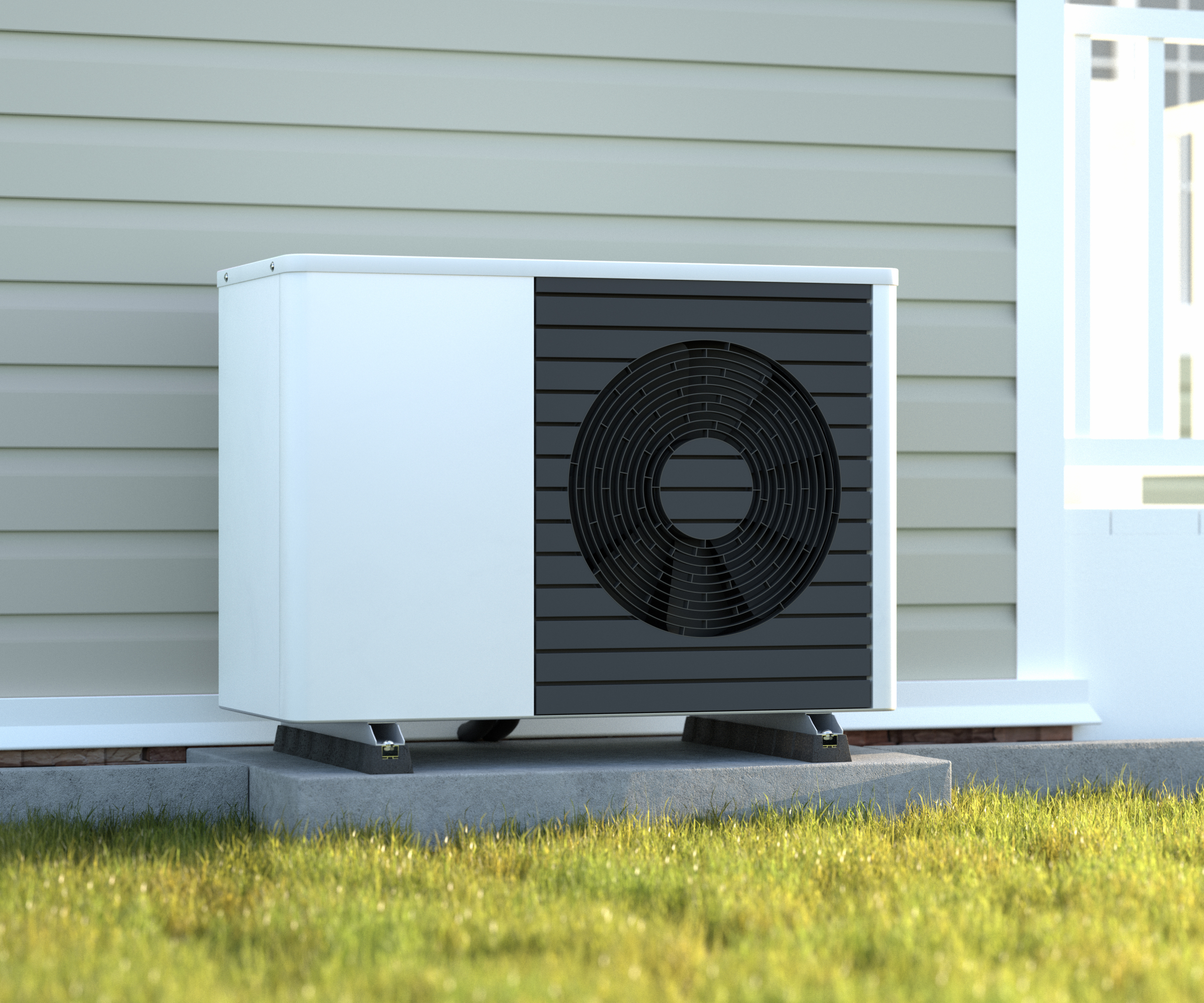

Tamara Birch has written about environmental topics for over four years. This includes advising small business and homeowners on cost-effective ways, like solar panels and energy-efficient products to help them become more sustainable.

Hamid has worked with Daikin for over 13 years in various roles such as product applications, HVAC design and currently as a Product Manager leading a team of product specialists covering all aspects of residential renewable heating. Hamid specializes in and talks about Heat Pumps, Renewables and Net Zero.

David is a renewables and ventilation installer, with over 35 years experience, and is an authority in sustainable building and energy efficiency, with extensive knowledge in building fabrics, heat recovery ventilation, renewables, and also conventional heating systems.
Book an annual service
In the same way as you are encouraged to get an annual service on your boiler, the same rule applies to air source heat pumps.
"It’s a good idea to book in your annual service before the winter sets in," says Hamid Salimi. "You want to be confident that your heating system is working at maximum efficiency during the cold weather and we recommend this is done by a qualified heat pump engineer in order to maintain the warranty."
In general, a service engineer should be undertaking a full visual inspection, testing your electrical circuits, running visual and diagnostic system tests, checking the pressure and looking for leaks, performing temperature output checks and making sure your system is running at its best efficiency.
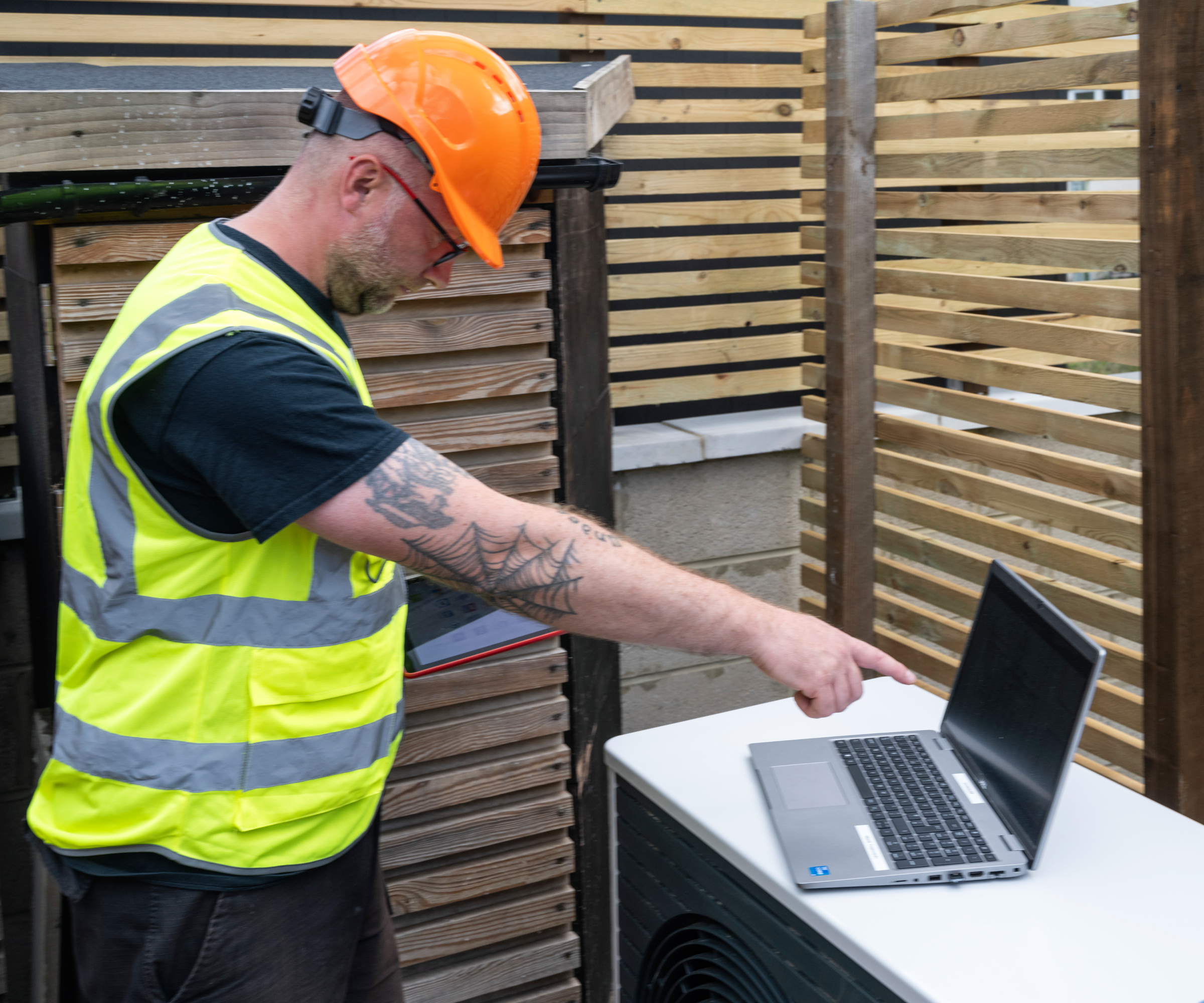
Maintaining a ground source heat pump
When it comes to the maintenance you can do as a homeowner, “for all heating systems, it’s good practice for the heating distribution system, including radiators or underfloor systems, to be proactively checked and maintained to ensure optimum performance when colder weather is on the horizon," says David Billingsley, Kensa sales director.
All installers he tells us are encouraged to recommend to customers that they regularly clean the convector fins of their radiators with a long-handled radiator brush, or the nozzle attachment of a hoover, to ensure the heat is radiating out uninhibited.
However, "as the heat pumps are stored inside and sheltered from the elements, they have an expected product lifecycle of around 25 years," and require less homeowner involvement.
You will still benefit from an annual GSHP service
That said, David recommends, "the following basic checks should be completed annually by the installer or a heating engineer well versed in ground source heat pumps, ahead of cold weather."
- Check the inhibitor levels to ensure no corrosion or degradation has occurred
- Make sure that all pump valves and actuators on the system are functioning correctly
- Ensure all room stats and programmers are operating correctly and are programmed correctly
- If any components require a battery to function, check that the battery has charge
- If the system has filters or a MagnaClean, check that this is cleaned and/or serviced
- Check the pressure of the ground and heating system; Kensa recommends that it is above 2 bar
- Perform an air charge pressure check on the expansion vessel
- Check antifreeze concentration and health
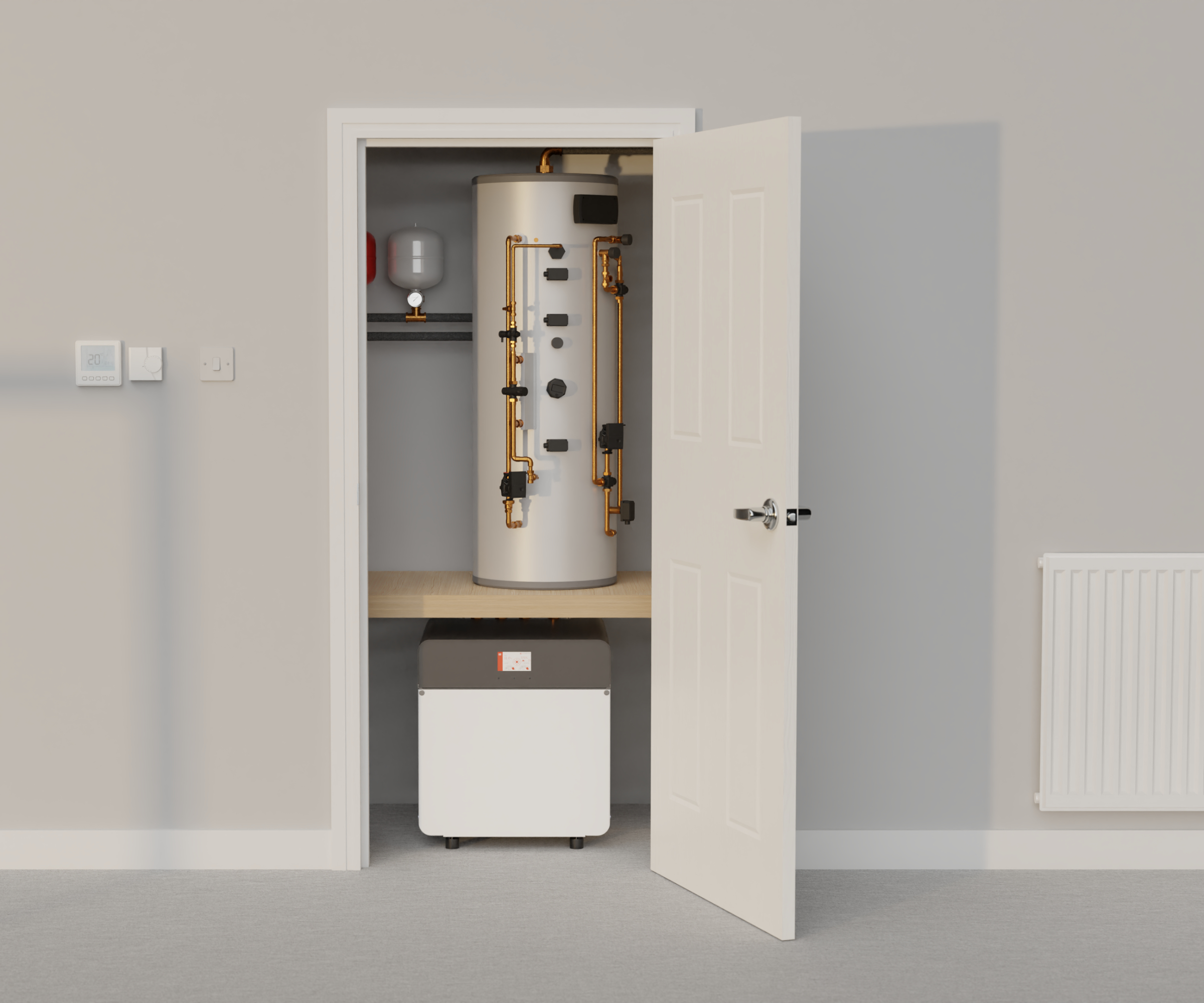

David joined Kensa in 2011, bringing with him a wealth of experience, having been involved in the heat pump industry since 2004. David manages the Sales team and works within both the domestic and commercial sectors.
Dealing with problems
As with any heating system, if you find a problem, your first point of contact should be with a registered MCS (Microgeneration Certification Scheme) heating engineer. With air source heat pumps containing refrigerant liquid, leaks are also something to be dealt with by a professional.
"If you do see a leak anywhere - either inside or outside, you should of course arrange for the unit to be inspected by a competent heat pump engineer," says Hamid Salimi.
David Hilton also notes how, "some manufacturers have developed controls that can be monitored and maintained remotely. In the event of a breakdown, the system can be checked, faults diagnosed and the correct spares sourced before incurring the expense of going to site.
"The engineering accessibility is often an after-sales add-on product," he warns, "so check costs and requirements before installing your air source heat pump.
"In the absence of full remote control and monitoring, it is worth finding a controller that at least stores the operating data on a memory card," says David Hilton, "so that it can be accessed for analysis and perhaps new settings and updates emailed to you for upload."
Likewise, with the pipes for ground source heat pumps installed underground, if you have a problem, contacting the supplier in the first instance is also the recommended route.
Wondering is my home suitable for a heat pump? Follow our 5 point checklist to start assessing your options. Or, if you think biomass boilers or solar panels are on the agenda, find out how to work out your energy needs and choose the right renewables.

Sarah is Homebuilding & Renovating’s Assistant Editor and joined the team in 2024. An established homes and interiors writer, Sarah has renovated and extended a number of properties, including a listing building and renovation project that featured on Grand Designs. Although she said she would never buy a listed property again, she has recently purchased a Grade II listed apartment. As it had already been professionally renovated, she has instead set her sights on tackling some changes to improve the building’s energy efficiency, as well as adding some personal touches to the interior.
